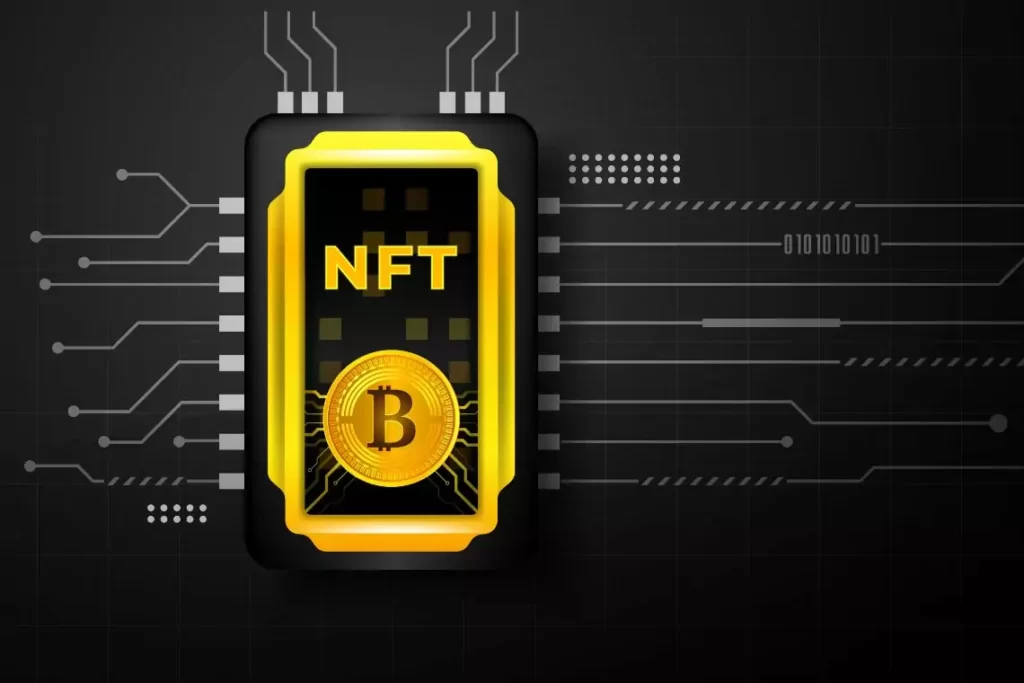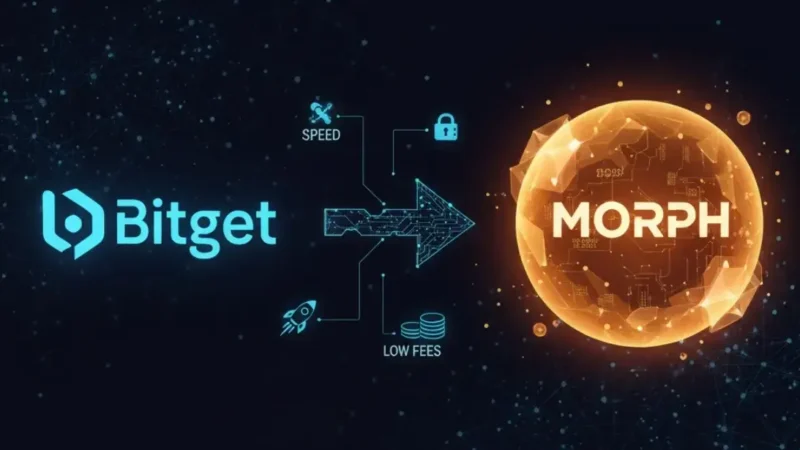Unraveling the Mystery: NFT and cryptocurrencies Explained

In an era characterized by rapid digital innovation, the fusion of technology, art, finance, and ownership has given rise to phenomena like cryptocurrencies and Non-Fungible Tokens (NFTs). As its name implies, cryptocurrencies are digital or virtual currencies that utilize cryptography for secure transactions, decentralization, and the control of new unit creation. Known as blockchain, this technology underscores all such transactions on the internet. By contrast, NFTs apply the same fundamental technologies to bring uniqueness to the digital sphere, encapsulating rarity and ownership of virtual artifacts. This exploration into the digital realms of NFT and cryptocurrencies opens up discussions on their foundational technology, their applications and nuances, the intertwining relationship between them, and the opportunities and challenges they present.
Understanding Cryptocurrencies
Understanding Cryptocurrencies: Basics
For the general public, understanding cryptocurrencies begins with grasping the foundational technology: blockchain. At its core, blockchain is a digital ledger recording transactions across several computers so that any involved record cannot be altered retroactively, without the alteration of all subsequent blocks. This high level of security and transparency gives cryptocurrencies their value.
Key Examples: Bitcoin and Ether
Bitcoin and Ether are prime examples of popular cryptocurrencies. Bitcoin tackles the problem of double-spending by creating a decentralized system without a central server. Unlike traditional currency, Bitcoin is produced by computers worldwide using free software. It introduced new concepts in the digital world, such as cryptocurrency and digital mining, where computers solve complex mathematical problems, and the owner is rewarded with digital currency.
Ether, on the other hand, is primarily used for two purposes: as a digital currency like Bitcoin and is used inside the Ethereum platform to run applications and even to monetize work. Customers could use Ether on the platform as a method of value transfer.
Cryptocurrency Use Cases
Cryptocurrencies, including Bitcoin and Ether, provide several uses. They can act as a digital form of money, enabling transactions across borders without the need for traditional banking systems or currency exchange. Cryptocurrencies also provide a high level of anonymity, which has led to both legitimate uses, such as preserving privacy in transactions, and less legitimate uses, like illegal activities.
Relating Cryptocurrency to the Advent of NFTs
NFTs, or Non-Fungible Tokens, are a newer cryptocurrency-related innovation. They use the principles of blockchain to create unique or limited-edition digital items that can be bought and sold like any other type of property, but they have no physical form. They are sold and bought on various online marketplaces using cryptocurrencies, usually Ether. By owning an NFT, you have the proof of ownership of a unique item or piece of content, which has become particularly popular in the art industry and among digital collectors.
Risks and Criticisms of Cryptocurrencies
Despite their popularity and potential advantages, there are also criticism and risks associated with cryptocurrencies. Price volatility, lack of regulatory oversight, vulnerability to hacking, and the environmental impact of cryptocurrency mining are common concerns. Additionally, while blockchain transactions are secure, losing access to one’s cryptocurrency wallet can result in permanent loss of those assets. Lastly, cryptocurrency is still not universally accepted as a form of payment, limiting its use compared to traditional forms of money.
The Appeal of Cryptocurrencies
Cryptocurrencies offer alluring benefits that are attracting a growing number of people. These benefits include decentralization, the ability to conduct borderless transactions, and inflation protection. Cryptocurrencies grant a level of financial autonomy and security that traditional financial systems simply can’t match. As digital currencies, their applications are dynamic and surprisingly varied, featuring in everything from smart contracts to decentralized finance, and even playing a vital role in the world of Non-Fungible Tokens (NFTs). The advent of these technologies marks a new era in finance and trade.

Overview of Non-Fungible Tokens (NFTs)
Deciphering Non-Fungible Tokens (NFTs)
Non-Fungible Tokens, commonly referred to as NFTs, represent a unique type of digital asset. They first came to prominence when blockchain technology – a decentralized ledger designed to securely record and verify transactions – entered the mainstream. Thanks to the advent of NFTs, we now have an efficient, innovative way to establish undisputed ownership and authenticity of specific digital commodities.
NFTs function on the same blockchain technology that underpins established cryptocurrencies like Bitcoin and Ethereum. But whereas individual units of these currencies are interchangeable or “fungible,” NFTs are distinct or “non-fungible”. Each NFT represents a specific digital asset—this could be anything from artwork to real estate—and holds unique information verifying both its one-of-a-kind nature and proof of ownership.
Use Cases of NFTs
The implementation of NFTs opens up numerous innovative use cases. Among the most popular is the digital art market. Artists can now turn their work into NFTs and sell them directly to consumers without an intermediary, providing them with more control over their intellectual property and potential economic gains.
Real estate is another industry where NFTs are making a significant impact. Specific pieces of property can be tokenized into NFTs, and individuals can purchase these tokens to own or invest in them. It offers an alternative method for property investment, slicing out costly fees and making the process more efficient.
Additional use cases include digital collectibles, virtual goods in video games, and even tokenizing certain services such as access to exclusive online content.
Controversies Surrounding NFTs
Despite their potential, NFTs are not without controversy. Critics point to high energy usage in the creation and transaction of NFTs, raising significant environmental concerns. Also, copyright and intellectual property issues often arise when an artist’s work is tokenized without their permission.
There’s also the issue of market volatility. Some saw remarkable profits in the early stages of the NFT frenzy, while others lost significant sums amidst market fluctuations. This has raised concerns about speculative bubbles in the NFT market.
Potential Impacts on Society
The potential future impact of NFTs on society is vast and largely undefined. The ability to digitize, monetize, and own unique pieces of digital content could fundamentally change many industries, from art and music to property and media. It expands the possibilities for creators and innovators, while providing consumers with enhanced accessibility and novel ways of engaging with digital and physical assets.
With the ongoing growth of the digital space, the interaction of consumers and unique digital assets could be an integral part of the digitized economy and our society. However, encompassing this potential requires safeguarding against risks and challenges presented by NFTs and ensuring that their use remains sustainable, fair, and advantageous to all parties involved.
Embracing Blockchain Technologies
The increasing growth and acceptance of blockchain technologies, including Non-Fungible Tokens (NFTs) and cryptocurrencies, may necessitate a reevaluation of our current regulations and legal frameworks. As we navigate through these digital advancements, it becomes necessary to develop an appropriate approach that ensures the safety of all parties involved, while simultaneously promoting their use.

Connection Between NFT and cryptocurrencies
Understanding Cryptocurrencies and Blockchain
Cryptocurrencies are virtual or digital currencies that use the decentralized technology of blockchain. This technology records and secures transactions across multiple computers, ensuring the transparency and security of the transaction. The most well-known and commonly used cryptocurrency is Bitcoin, although there are others like Ethereum, Ripple, and Litecoin, which have secured their place within the market. The promising aspect of cryptocurrencies is their potential to modernize financial systems. By removing middlemen, they can reduce overall costs and quicken transaction times.
Non-Fungible Tokens (NFTs) and Blockchain
NFTs, or non-fungible tokens, are a type of digital asset that also utilize blockchain technology. They are unique and cannot be replaced with anything else, hence the term non-fungible. They’re essentially digital certificates tied to unique pieces of content. While cryptocurrencies like Bitcoin are fungible and can be exchanged on a like-for-like basis, NFTs are completely unique. A well-known example of this is ‘Everydays: The First 5000 Days,’ a digital artwork by Beeple that sold for a staggering $69 million as an NFT.
Interconnection Between Cryptocurrencies and NFTs
While it may seem like NFTs and cryptocurrencies cater to different applications – one focusing on secure financial transactions, the other on proving digital ownership – their roots in blockchain technology means they share more similarities than differences. They both benefit from blockchain’s decentralization, transparency, and security. For instance, transactions involving NFTs or cryptocurrencies are recorded on the blockchain, validating the process, preventing duplication, and keeping the entire process transparent.
Moreover, in most cases, NFTs are purchased using cryptocurrencies. Ethereum is the most common cryptocurrency used to purchase NFTs because most NFTs are built on Ethereum’s blockchain. Here, Ethereum’s blockchain stands as a ledger for NFTs, keeping an accurate record of which NFTs belong to which Ethereum addresses.
Market Trends and Shared Challenges
Considering market trends, cryptocurrencies and NFTs have demonstrated a keen tendency to mirror each other’s highs and lows, suggesting an interconnectedness. Rising interest and investment in one often precipitates a similar rise in the other.
However, they both also share challenges, with energy consumption being the key concern. Both NFTs and cryptocurrencies rely on blockchain, which consumes significant amounts of energy. Cryptocurrency mining, transaction validation, the creation, sale and purchase of NFTs – all these processes require vast computational power and hence energy.
Regulatory scrutiny is also shared between cryptocurrencies and NFTs. Numerous countries have expressed concerns about potential money laundering and fraud with cryptocurrencies. Similarly, debates over copyright issues and the authenticity of digital assets are also heating up around NFTs.
Real-world Examples of NFTs and Cryptocurrencies
In recent times, several high-profile stories have generated much buzz around Non-fungible tokens (NFTs) and cryptocurrencies. For example, digital artist Mike Winkelmann, more commonly known as Beeple, marked a significant milestone for NFTs when his ‘Everydays: The First 5000 Days,’ piece was tokenized into an NFT and sold at a whopping $69.3 million in Ethereum.
Twitter’s founder, Jack Dorsey, also made waves when he tokenized his first tweet as an NFT and sold it for $2.9 million. This event underlined the potential financial value unique digital assets can hold.
When it comes to cryptocurrencies, there’s no shortage of success stories, with Bitcoin standing out particularly. Take Erik Finman, for example, who invested in Bitcoin at just 12 years old and became a millionaire by the time he was 18. These stories serve as testament to the potential gains, as well as risks, that come with plunging into the turbulent markets of cryptocurrencies and NFTs.

Investing in NFTs and Cryptocurrencies
Delving Deeper into NFTs and Cryptocurrencies
Non-fungible tokens (NFTs) and cryptocurrencies may both be digital assets, but they differ in their fundamental principles. Cryptocurrencies such as Bitcoin and Ethereum exist as decentralized digital currencies and can be used as a medium of exchange. Similarly, NFTs, being unique digital commodities stored on a blockchain, signify ownership or proof of authenticity within the digital landscape. The value of these assets sees frequent changes as a result of variation in market demand, which can be both lucrative and risky.
Starting with Basics: NFTs and Cryptocurrencies
Investing in digital assets requires some knowledge of blockchain technology. Both NFTs and cryptocurrencies use blockchain, a decentralized ledger that verifies and records each transaction. Cryptocurrencies are typically fungible, meaning each individual unit is interchangeably identical, like physical currencies. Conversely, each NFT is completely unique, similar to collectibles or pieces of art. For newcomers, it is crucial to research and understand these concepts and their financial implications before making any investments.
Risk Analysis: Volatility and Potential Loss
The digital asset market is known for its volatility. Prices of cryptocurrencies and NFTs can make drastic moves within short periods. It is essential for potential investors to assess their risk tolerance and make informed decisions accordingly. Investing money you cannot afford to lose is ill-advised considering the volatility and unpredictability of the market. Additionally, the lack of regulatory oversight in the industry introduces additional risk.
Potential Rewards: High Returns and Market Capitalization
Price volatility can also result in high returns. Cryptocurrencies like Bitcoin and Ethereum have seen exponential growth over the years, turning early investors into millionaires. The NFT market, while newer, has seen significant sales, particularly in digital art. As of 2022, the cryptocurrency market has reached a capitalization of over $2 trillion, and the NFT market crossed $40 billion in sales in 2021.
Market Strategies: Research and Diversification
Successful investing in digital assets requires both ongoing research and smart financial strategies. Tracking industry news, changes in technology, and trends in investor behaviors can provide valuable market insights. It is also advisable to diversify your digital asset investments as a form of risk management, just as you would with a traditional investment portfolio. Utilizing a range of cryptocurrencies and NFTs can help mitigate losses if one asset performs poorly.
Cautions: Scams and Security Concerns
The anonymity and lack of regulation in the digital asset marketplace have made it a target for scams and fraudulent activity. Before investing, ensure the authenticity of the cryptocurrency or NFT by using reputable platforms and double-checking transaction details. Security is another important concern. It’s vital to store digital assets securely by using hardware wallets or trustworthy wallet apps and regularly updating security measures. Be cautious of sharing wallet information and always keep your private keys confidential.
Environmental Impact of Digital Assets
Another important consideration when investing in NFTs and cryptocurrencies is their environmental impact. Mining cryptocurrencies requires an enormous amount of computational power, which often leads to high energy consumption and carbon emissions. This environmental concern has been a major point of criticism for the crypto industry. NFTs, depending on their platform and type, can also contribute to this environmental footprint. Potential investors should weigh the ecological implications of their investments.

As cryptocurrencies and NFTs continue to evolve and impact various aspects of our daily lives, it has never been more essential to understand these digital phenomena. Their technological foundation, blockchain, presents promising uses, benefits but with risks. The interconnected influences of these digital innovations extend beyond financial markets, impacting sectors like arts, real estate, and beyond. Furthermore, the begun but yet incomplete journey of these trends into the regulatory sphere makes it an area worth keeping an eye on. In light of the potential rewards that cryptocurrencies and NFTs hold for savvy investors, along with the implications they have on our understanding of ownership and value in the digital age, it underscores the importance of educating ourselves in this digital revolution and treading prudently in these potentially turbulent waters.




